As a passionate advocate for animals, I have embarked on a personal journey of navigating the world of temporary foster care for dogs. It is a fulfilling and rewarding experience that allows me to make a difference in the lives of these furry companions who are in need of a loving home. Through my journey, I have discovered the importance of dog foster homes and the crucial role they play in helping dogs find their forever families.
Temporary foster care for dogs provides a safe and nurturing environment where dogs can receive the individual attention and love they need to thrive. These foster homes serve as a bridge between shelter life and a forever home, allowing dogs to experience a loving family environment while waiting for their perfect match. Over time, I have realized the immense impact that foster homes have in transforming the lives of these dogs, giving them a second chance at happiness.
In my journey, I have learned valuable insights and practical tips on how to navigate the world of temporary foster care for dogs. From preparing my home for a foster dog to providing daily care and ensuring their well-being, each step has been a learning experience filled with love and compassion. Through this article, I will share my knowledge and personal experiences to guide others who are interested in becoming foster parents.
Key Takeaways:
- Temporary foster care for dogs is a rewarding experience that provides a safe and nurturing environment for dogs in need.
- Foster homes play a crucial role in helping dogs find their forever families.
- Preparing your home for a foster dog and providing daily care are essential aspects of fostering.
- Foster dogs may have special medical and behavioral needs that require attention and support.
- By becoming a foster parent, you can make a significant impact on the lives of these dogs and help them find their forever homes.
The Importance of Dog Foster Homes
Foster homes play a vital role in providing temporary shelter and care for dogs in need. Through dog fostering programs, like the one offered by Best Friends Animal Society, individuals have the opportunity to make a positive impact on the lives of these animals. By opening up your home to foster a dog, you are giving them a second chance at finding a forever home.
Foster homes are especially crucial for adult dogs who may require extra care and attention that shelters often cannot provide. These dogs may have unique medical or behavioral needs that require individualized care. Foster homes provide the love, attention, and specialized support that can greatly increase a dog’s chances of being adopted.

Furthermore, fostering allows for socialization and behavioral training that can help dogs become more adoptable. In a foster home, dogs have the opportunity to learn basic obedience skills, adjust to a home environment, and experience positive interactions with people and other animals. This preparation not only improves their chances of finding a forever home but also helps them transition more smoothly into their new family.
Foster dog adoption is a rewarding experience not just for the dogs, but for the foster families as well. By providing temporary care, love, and support, foster homes create a bridge between rescue and adoption, giving dogs a safe and nurturing environment to thrive. Through this act of compassion, foster families play a vital role in helping dogs in need find their forever homes.
Becoming a Foster Parent
Are you interested in providing temporary pet foster care? Becoming a foster parent for dogs is a rewarding experience that allows you to make a positive impact on the lives of animals in need. To get started, you can reach out to local animal shelters, rescue organizations, or foster programs in your area. Many organizations, like Best Friends Animal Society–Utah, have specific foster programs dedicated to finding temporary homes for dogs. Each organization may have its own requirements and application process, so be sure to inquire about the necessary steps to become a foster parent.
As a foster parent, your role is to provide a healthy and safe environment for your foster dog. This includes ensuring they have access to food, water, and shelter, as well as providing transportation to and from veterinary appointments. Socialization, exercise, and love are also important aspects of fostering. The time commitment for fostering will vary depending on the dog’s energy level and needs, but even those with full-time jobs can foster. Foster coordinators will match you with a dog that is suitable for your schedule.
Fenced yards are not always necessary for foster parents, but supervision and leashing during outdoor activities are required to ensure the safety of the foster dog. It’s important to create a space where the foster dog can feel comfortable and secure in your home. This may involve using a designated room or area to help the dog adjust to their new environment. By providing temporary care and love, you can play a crucial role in preparing these dogs for their forever homes.
Preparing Your Home for a Foster Dog
Before bringing home a foster dog, it’s important to ensure that your home is ready to provide a safe and comfortable environment for them. This involves taking a few necessary steps to prepare. Here are some key things to consider:
- Gathering the necessary supplies: You’ll need to have the essential supplies ready for your foster dog. This includes food and water bowls, bedding, toys, a leash, collar, and a crate.
- Dog-proofing your home: Take the time to carefully dog-proof your home to prevent any accidents or potential hazards. Remove any toxic plants or substances, secure loose cords, and block off access to areas that may be unsafe for dogs.
- Creating a designated space: It can be helpful to create a designated space for your foster dog, especially during their initial adjustment period. This can be a small room or a specific area in your home where they can have their own space to relax and feel secure.

By taking these steps, you can ensure that your home is prepared to welcome and accommodate a foster dog. Creating a safe environment and having the necessary supplies readily available will help your foster dog settle in and feel comfortable during their stay with you.
Quotes:
Before bringing a foster dog home, it’s crucial to prepare your living space so that it’s safe and suitable for the dog’s needs. This includes gathering the necessary supplies and dog-proofing your home to prevent any accidents or hazards. Creating a designated space for the foster dog can also help them feel secure and adjust more easily.”
| Supplies You’ll Need | Dog-Proofing Tips |
|---|---|
| Food and water bowls | Remove toxic plants |
| Bedding | Secure loose cords |
| Toys | Block off access to unsafe areas |
| Leash and collar | |
| Crate |
Remember, each foster dog is unique, so make sure to tailor your preparations to their specific needs. Providing a well-prepared and dog-friendly environment will contribute to their overall well-being and help them adjust more easily during their time in your care.
Bringing Home Your Foster Dog
Bringing a foster dog into your home is an exciting and rewarding experience. It’s important to remember that each dog is unique, and their transition to a new environment may take time. When choosing a foster dog, consider their needs, energy level, and compatibility with your household. It’s essential to provide a safe and comfortable space for the dog to settle in.
Introducing the foster dog to your household should be done gradually, especially if you have other pets or children. Table 5.1 below outlines some guidelines for dog introductions, cat introductions, and interactions with children.
| Dog Introductions | Cat Introductions | Children and Dogs |
|---|---|---|
| – Introduce dogs on neutral territory, such as a park – Keep both dogs on a leash initially – Observe their body language for signs of stress or aggression – Allow them to sniff and interact gradually over time |
– Create a safe space for the cat, such as a separate room – Allow the cat to approach the dog at its own pace – Supervise interactions and separate them if necessary – Provide vertical space for the cat to escape if needed |
– Teach children to approach dogs calmly and gently – Supervise interactions between children and dogs at all times – Teach children to respect the dog’s boundaries – Educate children about appropriate behavior around dogs |
Remember, every dog is unique, and these guidelines serve as general advice. It’s essential to observe the dynamics between the foster dog and your household members, adjust accordingly, and seek guidance from your foster program if needed. Patience, consistency, and positive reinforcement play key roles in ensuring a smooth transition for the foster dog.
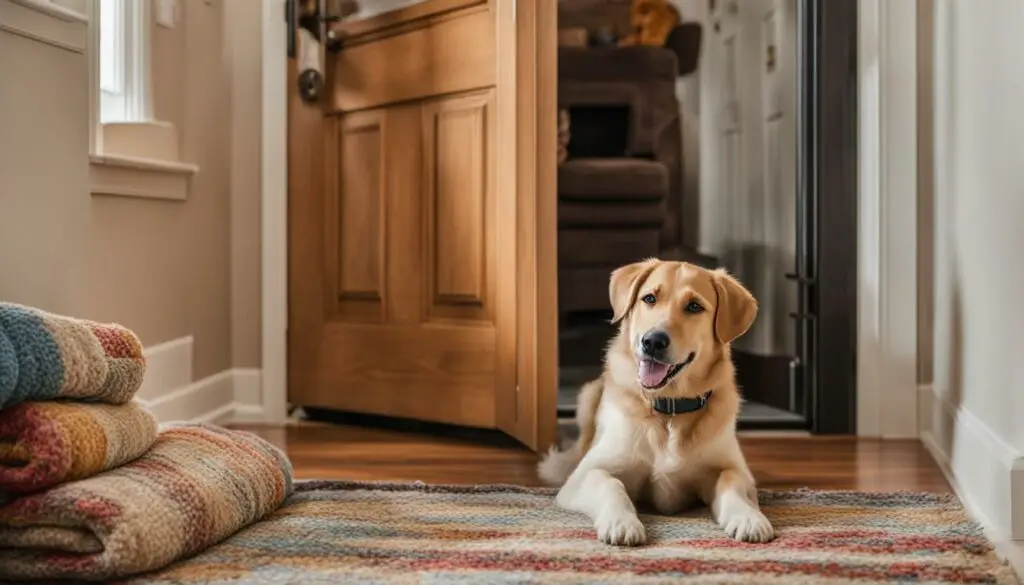
Daily Care for Your Foster Dog
When it comes to taking care of your foster dog, daily care is essential to ensure their well-being and happiness. This includes providing them with proper feeding, establishing a daily routine, house-training them if necessary, crate training, grooming, and providing mental stimulation and exercise. Additionally, it is crucial to follow safety requirements to keep your foster dog safe and secure.
Feeding: One of the most important aspects of daily care is feeding your foster dog a balanced diet that meets their specific nutritional needs. Consult with the organization or program you are fostering through to determine the appropriate amount and type of food for your foster dog. Consistency in feeding times and portions can help establish a routine and promote a healthy appetite.
House-training: Depending on the age and past experiences of your foster dog, they may require house-training. Set up a designated potty area and establish a consistent schedule for taking your foster dog outside. Positive reinforcement and rewards for appropriate bathroom behavior can help speed up the house-training process.
| Feeding | House-training | Crate Training |
|---|---|---|
| Provide a balanced diet | Establish a consistent schedule | Create a safe and comfortable space |
| Consult with the organization | Positive reinforcement and rewards | Introduce the crate gradually |
| Follow feeding guidelines | Set up a designated potty area | Use positive reinforcement |
Crate Training: Crate training can be beneficial for both your foster dog and your household. It provides them with a safe and comfortable space of their own and can assist in house-training and preventing destructive behavior. Introduce the crate gradually, using positive reinforcement and rewards to make it a positive experience for your foster dog.
Grooming, Mental Stimulation, and Exercise: Regular grooming, such as brushing and bathing, helps keep your foster dog clean and healthy. Provide mental stimulation through interactive toys and puzzles, as well as regular exercise to keep them physically and mentally active. This can include daily walks, playtime, and training sessions.
Safety Requirements: Ensure that your home is safe and secure for your foster dog. This includes removing any toxic plants or substances, securing loose cords or objects that could be hazardous, and ensuring that your foster dog is always supervised and leashed during outdoor activities. Following safety requirements helps prevent accidents and keeps your foster dog protected.
Helping Your Foster Dog Get Adopted
When it comes to fostering a dog, one of the most rewarding experiences is helping them find their forever home. Here are some strategies and frequently asked questions to consider as you navigate the journey of finding the perfect family for your foster dog.
What can I do to increase the chances of my foster dog getting adopted?
Promoting your foster dog through social media is a powerful way to reach a wide audience. Share their story, post adorable photos, and highlight their unique personality traits. Attend local adoption events where potential adopters can meet your foster dog in person. Be sure to provide accurate and detailed information about their behavior, preferences, and any special needs they may have. This helps potential adopters make an informed decision and increases the chances of finding the right match.
What are some instructions provided by the Best Friends Lifesaving Center?
The Best Friends Lifesaving Center provides valuable guidance to help foster dogs get adopted. They may have specific instructions on how to promote your foster dog, such as using hashtags on social media or featuring them on their website. Following their instructions can greatly enhance the visibility and chances of finding a loving home for your foster dog.
| FAQ | Answer |
|---|---|
| Can I adopt my foster dog? | Yes! If you decide to adopt your foster dog, you can follow the adoption process provided by your foster program or organization. They will guide you through the necessary steps to make your foster dog a permanent member of your family. |
| How can I get in touch with potential adopters? | Reach out to local rescue groups, shelters, and adoption events to connect with potential adopters. Providing accurate and up-to-date information about your foster dog will help attract interested individuals or families. |
| What if my foster dog is not getting much interest? | Don’t get discouraged! Sometimes it takes time to find the perfect match. Work closely with your foster program or organization to explore additional avenues for promoting your foster dog. They may have resources or suggestions to increase their visibility and find potential adopters. |
Remember, the goal is to find a loving and permanent home for your foster dog. By collaborating with the Best Friends Lifesaving Center and implementing effective strategies, you can significantly increase the chances of your foster dog finding their forever family.
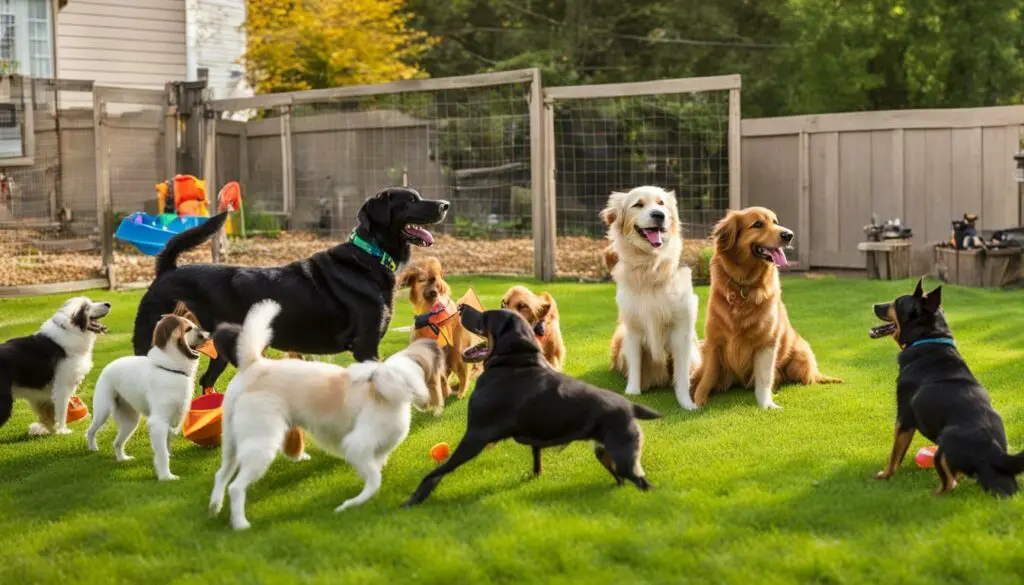
Medical and Emergency Protocols for Foster Dogs
As a foster parent, it’s crucial to be prepared for any medical emergencies that may arise while caring for your foster dog. Understanding basic medical protocols and knowing the signs of illness or common ailments can help you provide the necessary care and seek appropriate veterinary attention when needed.
Regular veterinary care is essential for foster dogs. Establish a relationship with a trusted veterinarian who can guide you on vaccinations, preventive medications, and any ongoing medical needs. Be vigilant and monitor your foster dog for signs of illness, such as changes in appetite, behavior, or energy levels. If you notice any concerning symptoms, consult your veterinarian for advice.
In the case of emergencies, it’s important to know the criteria that warrant immediate medical attention. Examples of emergency situations include difficulty breathing, severe injuries, seizures, or signs of poisoning. If you suspect your foster dog is experiencing a medical emergency, contact your veterinarian or a 24-hour emergency veterinary clinic immediately.
Table:
| Signs of Illness | Common Ailments |
|---|---|
|
|
Remember, as a foster parent, you are not alone in caring for your foster dog’s medical needs. Reach out to the foster program or organization you are working with for guidance and support. They can provide resources, assistance, and access to veterinary care to ensure the well-being of your foster dog.
Behavior Support for Foster Dogs
Fostering a dog can be a rewarding experience, but it’s important to remember that some foster dogs may come with behavioral challenges. These dogs may have experienced trauma or have behavioral issues due to their past experiences. As a foster parent, it’s crucial to provide the necessary behavior support to help these dogs overcome their challenges and find their forever homes.
One of the key aspects of behavior support is positive reinforcement training. This method focuses on rewarding desired behaviors rather than punishing unwanted behaviors. By using treats, praise, and consistency, you can help foster dogs learn new behaviors and break bad habits. Patience and understanding are key, as it may take time for these dogs to adjust and respond to training.
Another important aspect of behavior support is socialization. Many foster dogs may have had limited exposure to different environments, people, and animals. By gradually introducing them to new experiences and providing positive interactions, you can help them become more confident and well-rounded. It’s important to monitor their reactions and provide a safe and controlled environment during socialization activities.
| Behavior Support Tips for Foster Dogs |
|---|
| 1. Use positive reinforcement training to encourage desired behaviors. |
| 2. Provide a safe and controlled environment for socialization with people and other animals. |
| 3. Seek professional help if needed to address specific behavioral issues. |
| 4. Be patient and understanding, as it may take time for foster dogs to adjust and overcome their challenges. |
If you’re facing difficulties in addressing specific behavioral issues, don’t hesitate to seek professional help. Behavior specialists or trainers can provide valuable guidance and techniques tailored to the individual needs of the foster dog. They can help address issues such as fear, aggression, or separation anxiety, providing you with the tools and knowledge to support these dogs effectively.
By providing behavior support to foster dogs, you are creating a positive impact on their lives and increasing their chances of finding their forever homes. Your dedication and commitment to their well-being are instrumental in preparing them for a successful adoption. Together, we can help these wonderful dogs overcome their challenges and find the loving homes they deserve.
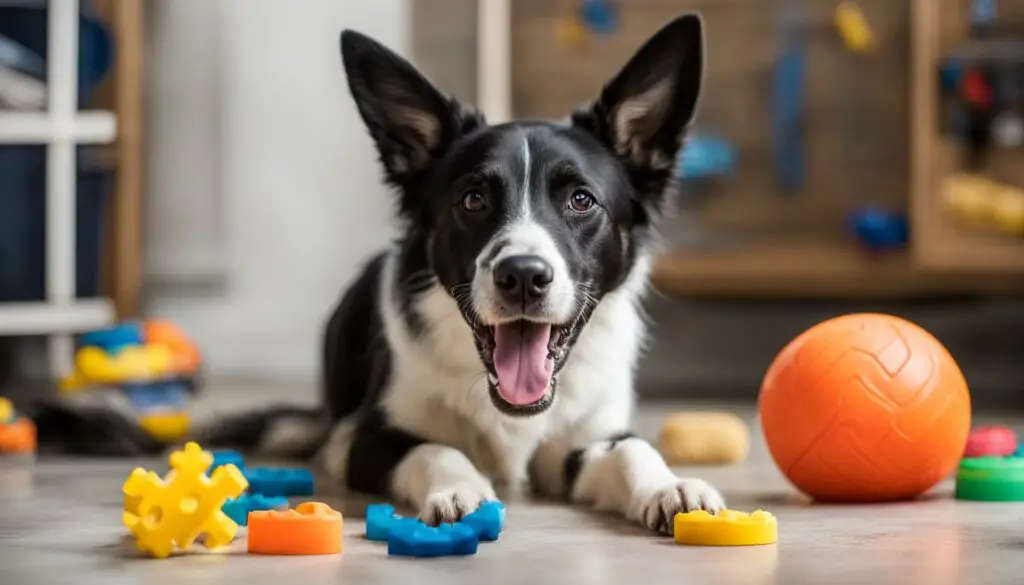
Where Foster Dogs Come From
When it comes to temporary foster care for dogs, it’s important to understand where these dogs come from. Many foster dogs are from returned adoptions or local shelters. Some dogs may have been adopted previously but were returned due to various reasons. These dogs often need a second chance at finding a forever home, and foster homes provide them with the love, care, and stability they need during this transitional period.
Foster dogs can also come from local shelters and rescue organizations. Shelters are often overcrowded, and fostering helps alleviate the burden on these facilities, allowing them to take in more dogs in need. By opening up your home to foster a dog, you are helping to save a life and give them a temporary safe haven until they can find a forever home.
“Foster homes are a crucial part of the rescue process, providing the individual attention and care that dogs need to thrive and find their forever families.” – Best Friends Animal Society
By understanding where foster dogs come from, we can appreciate the importance of foster homes in the overall rescue and adoption process. These temporary homes serve as a stepping stone for dogs to receive the necessary care, socialization, and love they need to become happy, healthy, and adoptable pets.

Foster Family Responsibilities
As foster families, we have a crucial role in providing essential care for our foster dogs. It is our responsibility to create a safe and loving environment for these dogs, ensuring their basic needs are met on a daily basis. This includes providing food, water, exercise, and comfortable bedding for our foster dogs. We must also ensure that they receive any necessary medical care, including vaccinations and regular check-ups.
Transportation is another important aspect of our responsibilities as foster families. We may need to take our foster dogs to veterinary appointments, adoption events, or meet-and-greets with potential adopters. By providing transportation, we are helping our foster dogs connect with the resources and opportunities they need to find their forever homes.
Socialization is a vital part of a foster dog’s journey, and it is our responsibility to help them adapt to different environments and interact with different people and animals. This can include taking them on walks, introducing them to new experiences, and providing opportunities for positive social interactions. By socializing our foster dogs, we are increasing their chances of finding suitable and loving forever homes.
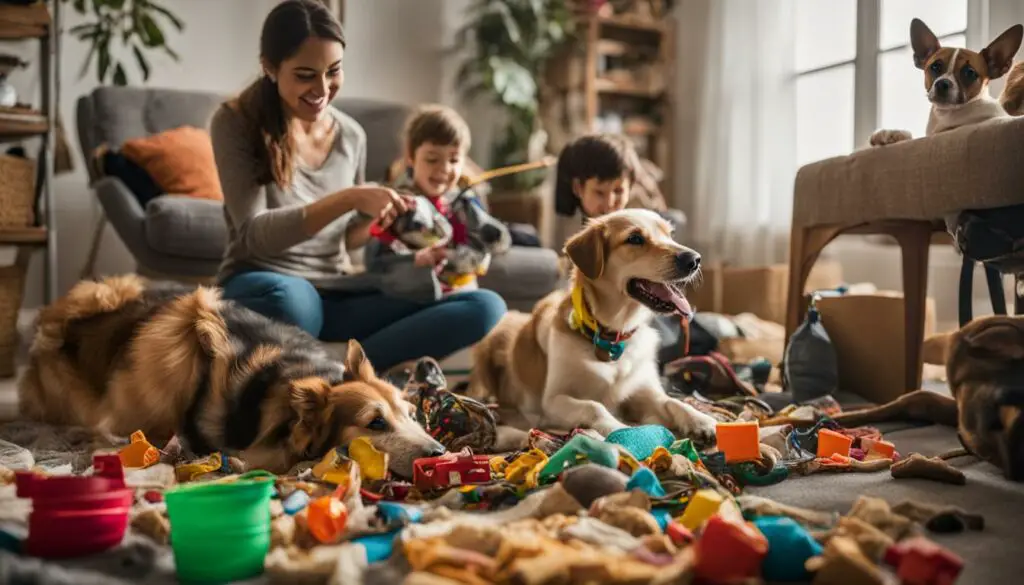
Foster Dogs and Your Personal Pets
If you have personal pets at home and are considering fostering a dog, it’s important to establish guidelines for interactions between the foster dog and your own pets. The safety and well-being of all animals involved should be a top priority.
Before introducing your personal pets to the foster dog, consult with a veterinarian. Ensure that your pets are healthy and up-to-date on vaccinations to minimize the risk of spreading any illnesses. Vaccinations are especially important if your foster dog is coming from a shelter or has an unknown medical history.
When introducing the foster dog to your personal pets, it’s crucial to supervise their interactions closely. Start with brief, controlled introductions in a neutral territory to minimize territorial behavior. Gradually increase the duration of the interactions as the animals become more comfortable with each other.
Always monitor the body language of the animals during interactions. Look for signs of stress, fear, or aggression, such as raised hackles, growling, or stiff body posture. If any negative behavior or aggression occurs, separate the animals and seek guidance from a professional dog trainer or behaviorist. Remember, the safety and well-being of all animals involved should always come first.

| Guidelines for Interactions Between Foster Dogs and Personal Pets |
|---|
| Consult with a veterinarian to ensure personal pets are healthy and up-to-date on vaccinations |
| Supervise all interactions between the foster dog and personal pets |
| Start with brief, controlled introductions in a neutral territory |
| Monitor the body language of the animals during interactions |
| Separate the animals if any negative behavior or aggression occurs |
| Seek guidance from a professional dog trainer or behaviorist if needed |
The Duration of Foster Care
When it comes to foster care for dogs, the duration can vary depending on various factors. For some dogs, finding their forever homes may happen relatively quickly, while others may require a longer period of time in foster care. The goal is always to provide a safe and nurturing environment for these dogs until they can find their permanent families. The duration of foster care is determined by factors such as the dog’s age, health, and adoption potential.
The foster coordinator, who works closely with the foster families, plays a crucial role in ensuring the best outcome for each dog. They assess the dog’s progress, monitor their behavior and health, and make recommendations based on their findings. They also collaborate with potential adopters, providing them with accurate and detailed information about the dog’s personality and needs.
Throughout the duration of foster care, foster families provide essential care, love, and attention for their foster dogs. They follow a daily routine, feed them, take them for walks, and ensure their physical and emotional well-being. Foster families also contribute to socializing the dogs, helping them adapt to different environments, and increasing their chances of finding suitable forever homes.

Factors Affecting the Duration of Foster Care
- The dog’s age: Puppies or younger dogs may find their forever homes more quickly than older dogs.
- Health concerns: Dogs with medical conditions may require a longer period of time in foster care to receive necessary treatment and recover.
- Behavioral issues: Dogs with behavioral issues may need additional time and support to work through their challenges.
- Adoption potential: Some dogs may have specific requirements or preferences when it comes to their adoptive families, which can affect the time it takes for them to find the right match.
By providing love, care, and a temporary home, foster families significantly contribute to the well-being and future of these dogs. Their dedication and support play a vital role in helping dogs transition from difficult circumstances to a brighter future.
Saying Goodbye to Your Foster Dog
As a foster parent, saying goodbye to your foster dog can be a bittersweet moment. While it can be emotionally challenging, it is also a testament to the love and care you have provided during their time in your home. However, if you have developed a strong bond with your foster dog and wish to adopt them, there is a process you can follow to make it happen.
Adopting your foster dog involves working closely with the foster coordinator or organization. They will guide you through the necessary steps, which may include filling out adoption paperwork and paying an adoption fee. It’s important to note that the process may vary depending on the organization and the specific dog you are fostering. However, the reward of providing a permanent home for your foster dog is immeasurable.
“Adopting your foster dog is a heartwarming experience that allows you to continue the journey of love and companionship with a furry friend you have grown to adore.”
If adopting your foster dog is not possible for you, take comfort in knowing that you have played an essential role in preparing them for their forever home. By providing love, care, and socialization, you have helped them become more adoptable and increased their chances of finding a loving family. Saying goodbye may be difficult, but knowing that they are moving forward on their journey to a forever home can bring solace.
Table: Foster Dog Adoption Process
| Step | Description |
|---|---|
| 1 | Contact the foster coordinator or organization to express your interest in adopting your foster dog. |
| 2 | Fill out the necessary adoption paperwork, which may include an application and an adoption fee. |
| 3 | Arrange for a meet-and-greet between your family and the foster dog, if required. |
| 4 | If approved, complete the adoption process and bring your foster dog home as a permanent member of your family. |
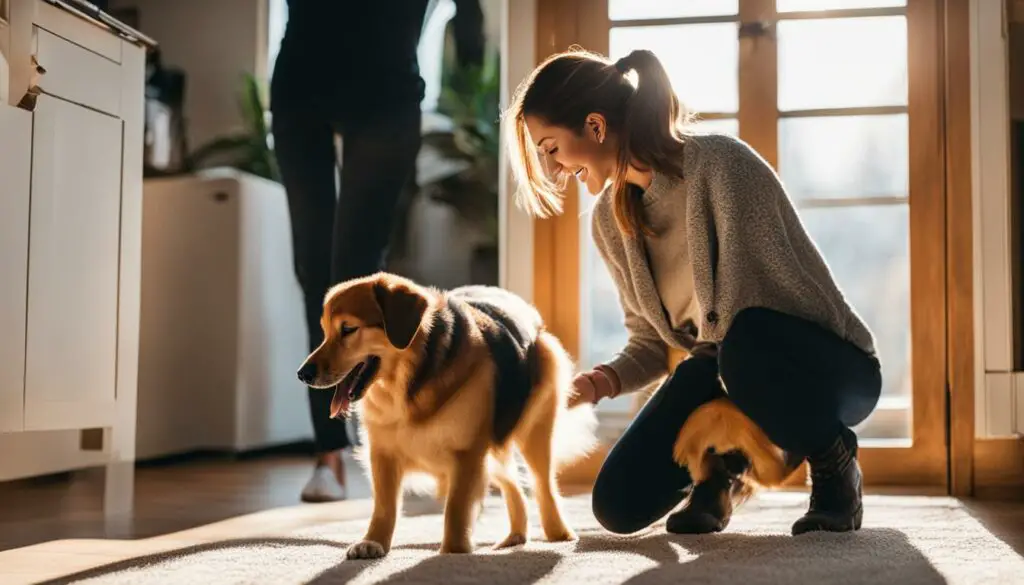
Adopting your foster dog is a heartwarming experience that allows you to continue the journey of love and companionship with a furry friend you have grown to adore. However, if adoption is not possible, remember that you have made a significant impact on their life, and they will carry the love and care you provided with them as they move on to their forever home.
Providing Temporary Care as a Short-Term Foster Home
As a foster parent, offering short-term care for dogs is a valuable contribution to their well-being and eventual adoption. Short-term foster homes play a crucial role in providing temporary shelter and care to dogs in need, especially when transport or longer-term foster homes are not immediately available. By providing a safe and nurturing environment for dogs on a short-term basis, you are helping them receive necessary vetting and allowing them time to adjust before continuing their foster journey or finding their forever homes.
Short-term foster care is particularly beneficial for dogs who may need extra attention due to medical conditions, behavioral issues, or simply require some time to recover from experiences in shelters or previous homes. It gives them a chance to heal and regain their confidence in a loving and supportive setting. By offering your home as a short-term foster, you are providing these dogs with the care and stability they need during a crucial transition period.
Short-term foster homes also help alleviate the burden on overcrowded shelters by creating space for incoming dogs. By opening your home to a dog in need, you are directly contributing to the lifesaving efforts of animal welfare organizations. Even a few days or weeks of temporary care can make a significant difference in the lives of these dogs.
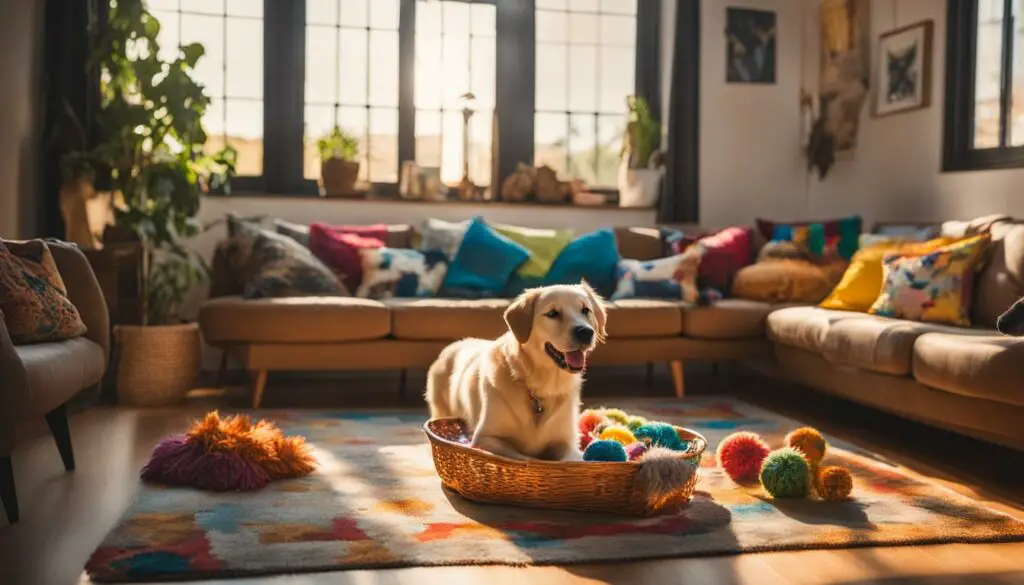
If you are interested in becoming a short-term foster home, reach out to local animal shelters, rescue organizations, and foster programs in your area. They will provide you with information on the application process and any specific requirements they may have. Remember, even a short period of fostering can have a lasting impact on a dog’s life, and your compassion and dedication can make all the difference in helping them find their forever homes.
Navigating Temporary Foster Care for Dogs: My Personal Journey
As a passionate advocate for animals, I decided to embark on a journey into the world of temporary foster care for dogs. Being part of a dog fostering program has been a rewarding experience that has allowed me to make a difference in the lives of these furry companions.
Temporary foster care for dogs is a vital part of the process of finding forever homes for these adorable creatures. By providing a loving and nurturing environment, foster homes play a crucial role in helping dogs transition from shelters to their forever families. It’s heartwarming to witness the transformation of these dogs as they receive the care and attention they deserve.
Being a foster parent involves various responsibilities, from preparing your home and daily care routines to helping your foster dog get adopted. It’s a hands-on experience that requires dedication and love. But seeing the joy on a dog’s face as they find their forever home makes it all worthwhile.
If you’re looking to make a positive impact in the lives of dogs in need, I encourage you to consider becoming a foster parent. By joining a dog fostering program, you’ll have the opportunity to provide temporary care and love to these amazing creatures, helping them on their journey to finding a forever home. Together, we can make a difference one dog at a time.
FAQ
What supplies will I need to foster a dog?
You will need food, water bowls, bedding, toys, leash, collar, and a crate.
How do I dog-proof my home?
Remove any hazardous items, secure loose cords, and block off access to unsafe areas.
How should I introduce my foster dog to their new surroundings?
Allow them to explore at their own pace and provide a safe and comfortable space for them.
What should I consider when introducing my foster dog to other pets and children?
Proper introductions and supervised interactions are key to ensuring everyone’s safety and comfort.
How do I establish a daily routine for my foster dog?
Feed them according to their needs, maintain a consistent routine, and house-train if necessary.
How can I increase my foster dog’s chances of adoption?
Promote them on social media, attend adoption events, and provide accurate and detailed information about their personality and behavior.
What medical care does a foster dog require?
They need vaccinations, preventive medications, and regular check-ups with a trusted veterinarian.
What should I do if my foster dog exhibits behavioral issues?
Provide behavioral support and seek professional help if needed, including positive reinforcement training and socialization.
Where do foster dogs come from?
They come from various situations, including returned adoptions and local shelters.
What are the responsibilities of a foster family?
They provide a safe and loving environment, meet the dog’s basic needs, and offer transportation to vet appointments and adoption events.
How should I introduce my foster dog to my personal pets?
Consult with a veterinarian, supervise interactions, and take necessary precautions to ensure everyone’s safety.
How long does foster care typically last?
The duration varies depending on the dog’s age, health, and adoption potential.
Can I adopt my foster dog if I develop a bond with them?
Yes, you can follow the adoption process and work with the foster coordinator to make it happen.
What is short-term foster care for dogs?
It offers temporary shelter and care for dogs for a few days to a few weeks when longer-term options are not available.








